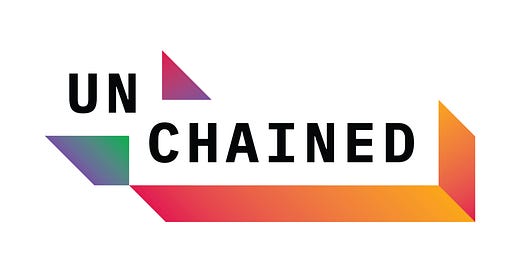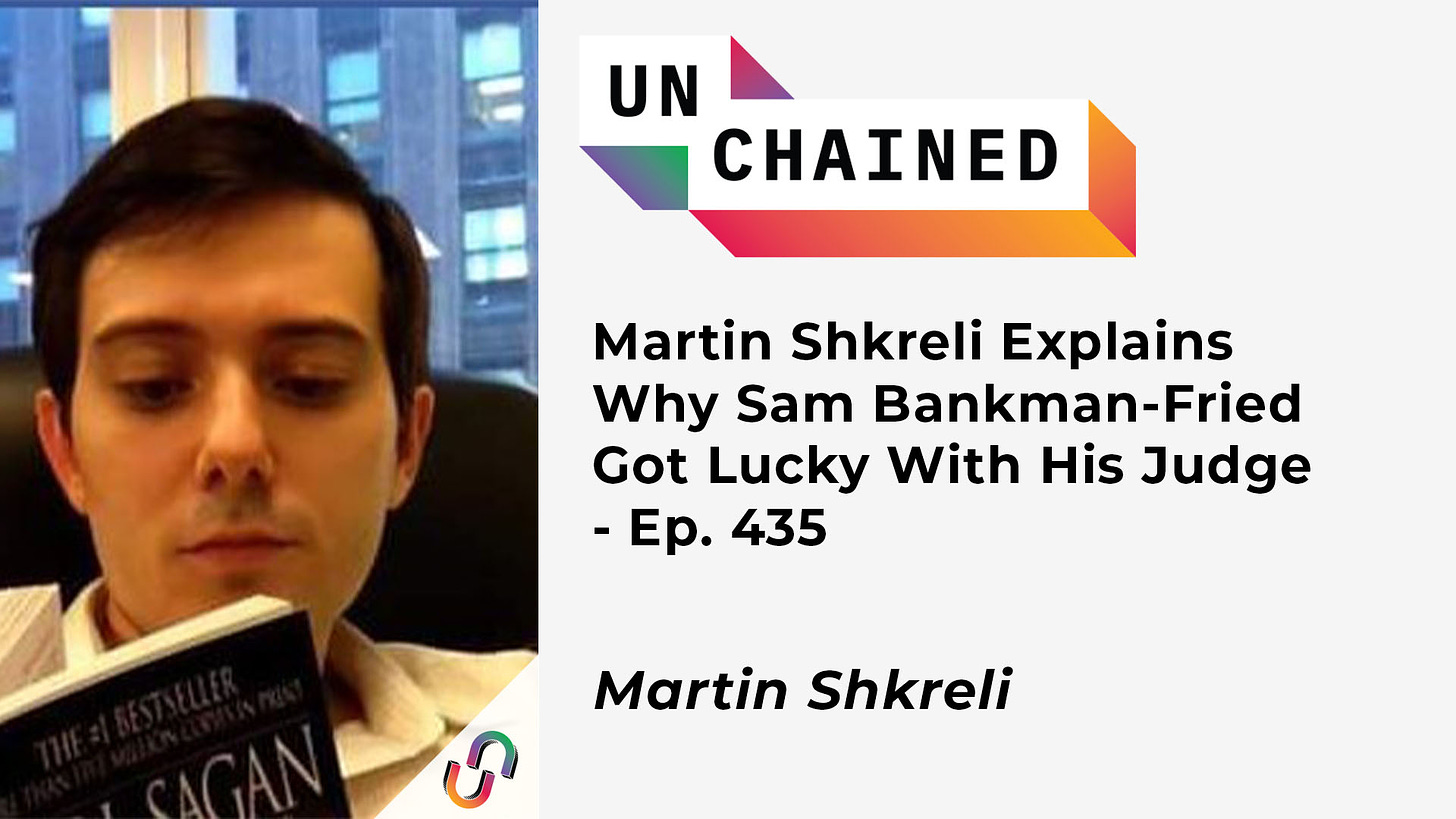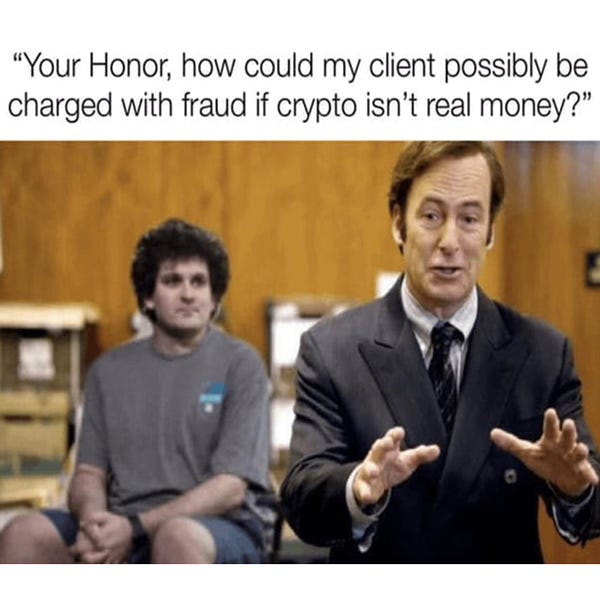Binance.US Wins Bid for Voyager’s Assets; Grayscale Might Return Capital
Weekly News Recap: Martin Shkreli on SBF's case, FTX's donations, Grayscale's plans, BlockFi's motion, and a poll: who's the crypto villain of 2022?
Wait, why am I receiving two emails in one day?
On Unchained, we run two newsletters: the daily ones, which go from Monday through Saturday, and the weekly (this one!) which recaps all the news in the crypto ecosystem in the past week. (It’s narrated in audio form on the podcast, so if you’re looking for the links to those stories heard on the show, they’re all in here!)
If you want to receive only one of the newsletters (for example, receive the daily and not the weekly, or vice versa), you can 100% do it.
How? Just go here and select whichever you want!
Weekly News Recap
Martin Shkreli, entrepreneur and investor, is especially well-suited to give insight into what Sam Bankman-Fried faces as he begins his process through the US justice system.
The convicted white-collar criminal says on the latest episode of Unchained that right now will likely end up being the most challenging time for SBF. “It's extremely difficult emotionally to know that your life is in the hands of one person,” he says, referring to the sentencing judge.
However, Shkreli adds, “It's funny because you think the long sentence is the hard part. Honestly, I think that was the easy part for me. And I could say, being in a similar situation to Sam, it's much easier than the trial prosecution part, which is really harrowing.”
Be sure not to miss this episode which is jam-packed with insights on what jail and/or prison could be like for Sam, why Shkreli believes the former FTX CEO “got lucky” with the judge assigned to his case, and what advice Shkreli would have for SBF in prison.
SBF Released on Bail
Minutes after I finished the interview with Martin, news broke that former FTX CEO Sam Bankman-Fried will be released on a $250 million bail secured by his parents’ home, as well as the signatures of his parents and two others with sizable assets. Prosecutors said it was the largest-ever pre-trial bond; Bernie Madoff’s was $10 million, former Enron CEO Jeffrey Skilling’s was $5 million, and former Theranos CEO Elizabeth Holmes’s was $500,000. SBF will attend his next hearing on January 3 in New York City.
FTX Urges Donations to Be Returned
FTX is seeking to secure the prompt return of funds previously donated by former CEO Sam Bankman-Fried and other former executives to various organizations and political parties.
In addition, federal prosecutors in Manhattan are reaching out to Democratic and Republican campaigns and committees that received donations from Bankman-Fried and his colleagues at FTX.
The Senate Majority political action committee (PAC) plans to return a $1 million donation from Bankman-Fried, and a $2 million donation from Nishad Singh, FTX's former head of engineering.
On Monday, CoinDesk reported that Modulo Capital, a multi-strategy hedge fund in which Alameda had invested $400 million, was formed by three former Jane Street traders and based in the Bahamian condo community in which SBF resided.
Also, FTX's new CEO John Ray III told members of Congress that he’s investigating how SBF's parents, Joseph Bankman and Barbara Fried, were involved in the operations of the exchange.
Ray confirmed that the family had "certainly received payments.”
Binance.US to Buy Voyager’s Assets
Binance.US has agreed to acquire the assets of bankrupt crypto lender Voyager Digital for approximately $1 billion. This includes the market value of Voyager’s crypto portfolio, as well as an additional $20 million of “incremental value.” The deal, which will be subject to court approval on January 5, 2023, will not close until March.
At that time, Voyager customers will be able to reconnect with their digital assets on the Binance.US platform and continue to receive disbursements. Additionally, they will have the option to liquidate their positions in order to receive cash.
Binance.US announced it intends to return funds to customers as soon as possible; it may also benefit from a surge of new users who sign up on Binance.US to withdraw their funds from Voyager.
The crypto lender filed for Chapter 11 bankruptcy earlier this year due to a $650 million unpaid loan to Three Arrows Capital.

Also, this week Binance joined the Chamber of Digital Commerce, an American lobbying group, to help establish policies to regulate cryptocurrency in the United States.
Grayscale Is Exploring Returning Capital to Investors
Grayscale Investments, the entity behind the largest Bitcoin Trust in the world, is contemplating returning a portion of the capital of its Grayscale Bitcoin Trust (GBTC) product if the Securities and Exchange Commission (SEC) denies approval of a spot bitcoin exchange-traded fund (ETF).
A tender offer would enable investors to purchase 20% of GBTC's outstanding shares, though the SEC would need to lift certain requirements for the offer to be successful.
In June, Grayscale filed a lawsuit against the SEC, claiming its denial of the conversion to spot Bitcoin ETFs was "arbitrary, discriminatory, and in excess of statutory authority."
Sam Andrew, author of Crypto Clarity Research and a recent Unchained guest, showed skepticism about this potential move. Here’s what he tweeted:

Grayscale’s parent company, DCG, also owns Genesis Global Capital, the entity that halted withdrawals last month after the FTX meltdown.
Gemini Earn customers, who have not been able to withdraw assets due to the liquidity crisis at Genesis, saw one step forward. On Wednesday, the law firm representing the creditors of DCG and Genesis proposed a plan to recover digital assets to pay back users of Gemini Earn.
Gemini cofounder Cameron Winklevoss stated that the creditor committee is expecting an initial response on the plan this week.
Gemini was clearly not the only company affected by Genesis’ liquidity issues. Bitvavo, a Dutch crypto exchange, said that it's unable to access the 280 million euros ($297 million) held at Genesis.
Bitcoin Miner Core Scientific Goes Bankrupt
Core Scientific, the biggest publicly traded US Bitcoin miner, has filed for Chapter 11 bankruptcy protection.

Court documents show that the miner estimates its assets and liabilities to be between $1 billion and $10 billion, with between 1,000 and 5,000 creditors.
The Bitcoin mining company said it reached an agreement with its creditors in what seems to be a prepackaged bankruptcy. The deal includes two debtor-in-possession (DIP) facilities for a total of $75 million; debtor-in-possession refers to when debtors will hold assets to which creditors have rights.
The filing comes one week after investment firm B. Riley offered Core Scientific a $72 million financing package and suggested bankruptcy was not the solution to the miner's problems. B. Riley is also the biggest creditor to the company and is owed roughly $42 million.
The Block reported that Core Scientific may sell up to 1 gigawatt worth of its sites under development.
The mining sector has been hard hit this year with a sharp decline in Bitcoin prices and increasing power and credit costs. In November, Bitcoin mining hit its lowest profitability since 2014.
Also this week, Greenidge, another Bitcoin miner, raised concerns
about its ability to remain in business, leading to its Board of Directors weighing a potential bankruptcy.
BlockFi Wants to Return Assets to Its Customers
Crypto lender BlockFi, which filed for bankruptcy last month after suffering from its exposure to FTX, is now seeking to reopen withdrawals for users who had crypto in BlockFi Wallet Accounts.
BlockFi issued a motion in the US Bankruptcy Court in the District of New Jersey, claiming that wallet users "unambiguously own the digital assets" and should be allowed to withdraw them if they so choose.
However, it clarified that the motion exclusively applies to BlockFi Wallet accounts, with withdrawals and transfers from BlockFi Interest accounts remaining paused.

Another bankrupt company that was in the spotlight this week was Three Arrows Capital. On-chain data shows it withdrew $2.4 million worth of ether from Binance on Sunday. The unclear reasons behind the movement of the funds raised concerns within the crypto community.
Wallets Tied to Defunct Crypto Exchange QuadrigaCX Move 104 BTC
Five wallets tied to bankrupt Canadian cryptocurrency exchange QuadrigaCX have stirred back to life after years of dormancy. Crypto researcher ZachXBT reported on Twitter that the wallets moved around 104 Bitcoin, worth $1.7 million, on December 17. Blockchain records show the wallets had not moved any funds since at least April 2018.
It was believed that Gerald Cotten, the founder of the exchange who allegedly died in India in December 2018, was the only person with access to the private keys of the exchange's cold wallets. The exchange filed for bankruptcy after his death, leaving users unable to access up to $200 million worth of crypto.
The movement of funds has led to further speculation that the late CEO faked his own death as part of a fraudulent exit scam.
Visa Taps Ethereum Layer 2 Starknet for Automated Payments
Visa released a proposal illustrating how the firm can collaborate with Ethereum on automatic payments. The paper proposes the use of an Ethereum scaling platform called StarkNet. With support from Visa, self-custodial wallets on Ethereum could eventually use a new system known as account abstraction to enable automated payments.

This would bridge the gap between the traditional banking app experience and blockchain payments, giving users the ability to schedule payments without having to sign each transaction. Visa is actively exploring opportunities to contribute to crypto development, with Catherine Gu, Visa's Head of CBDC and Protocols, stating an interest in learning by doing.
Visa's proposal brings the company a step closer to becoming a major player in the crypto space, as the successful implementation of the system could have a real impact on the world of payments.
FUN BITS
Who Do You Think Is 2022’s Crypto Villain of the Year?
2022 has been what I call the year of crypto carnage.
With all the collapses, mismanagements, and even frauds this year, the crypto community has turned against one villain, then another, then another.
While these perceived villains differ in many respects, they all have *one* thing in common: They swear they didn’t do anything wrong. I recapped all these now-infamous characters in a video:

Now, I want to ask you: who do you think is the biggest villain of them all? Please vote in our Crypto Villains World Cup polls. The quarter finals are now up on Twitter!



🔗Join Unchained Premium to get access to:
Behind-the-scenes interviews, in which I talk with crypto experts and entrepreneurs to learn all about the latest developments in the industry.
A subscriber-only Telegram group, where you can talk with the other members of the Unchained community, build a network in crypto, and talk directly with me and the Unchained team!
And now, a new offering: transcripts of all the shows, for subscribers only.
If you liked what you read:
👍 follow me on Facebook, Instagram, Twitter, LinkedIn and/or Medium
🎧 subscribe to Unchained on YouTube, Apple Podcasts, Spotify, Google Podcasts, Pandora or wherever you get your podcasts
and/or 📚buy my book, The Cryptopians: Idealism, Greed, Lies, and the Making of the First Big Cryptocurrency Craze








